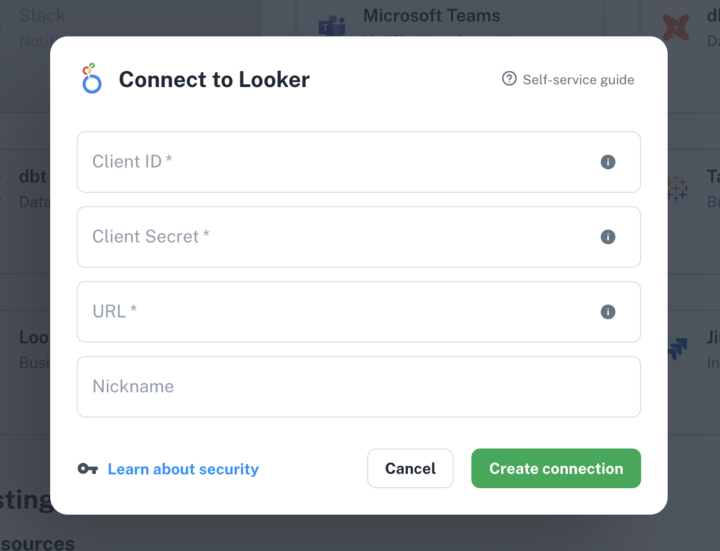Looker
Integrating Revefi with Looker enables seamless tracking of metadata and lineage of visualizations and looks.
Create Looker API Credentials
Create API credentials on the Users page in the Admin section of your Looker instance. If you are not the Looker admin, have your Looker admin to create the API credentials for you.
To generate API keys on the Users page, click the Edit Keys button. The Edit User API Keys page opens and shows the existing API keys. Click the New API key button to generate a new key.
Connect Looker to Revefi
The API credentials that you generated include a client ID and a client secret. You'll need to provide these to the Looker connection within Revefi along with the URL for your Looker instance via the Connections page in app.revefi.com:

Partial lineage in some Looker scenarios
You may observe incomplete lineage representation within Revefi for Looker Persistent Derived Tables. To enable full lineage tracking for Persistent Derived Tables, please contact us.
Updated about 1 month ago
Once that is done, Revefi will get all definitions from Looker (models, explores, dashboards, looks, views and boards) and create lineage with your warehouse tables.
All your BI artifacts now have Revefi Monitoring enabled. You can easily see the health of a visualization by introspecting health of underlying tables.
From any of your warehouse tables, you can also use lineage to get to impacted Looker objects.
